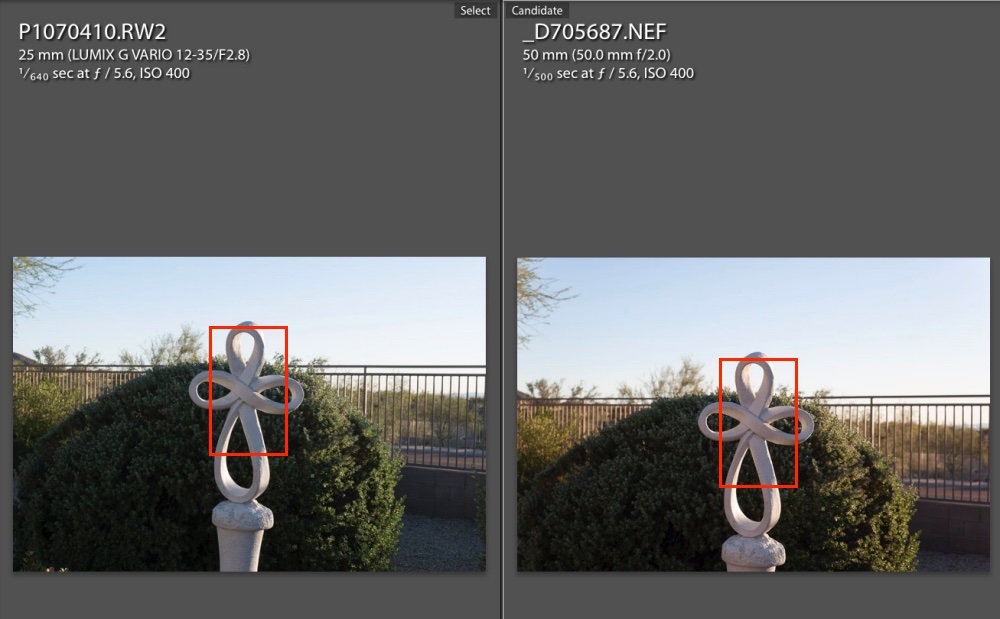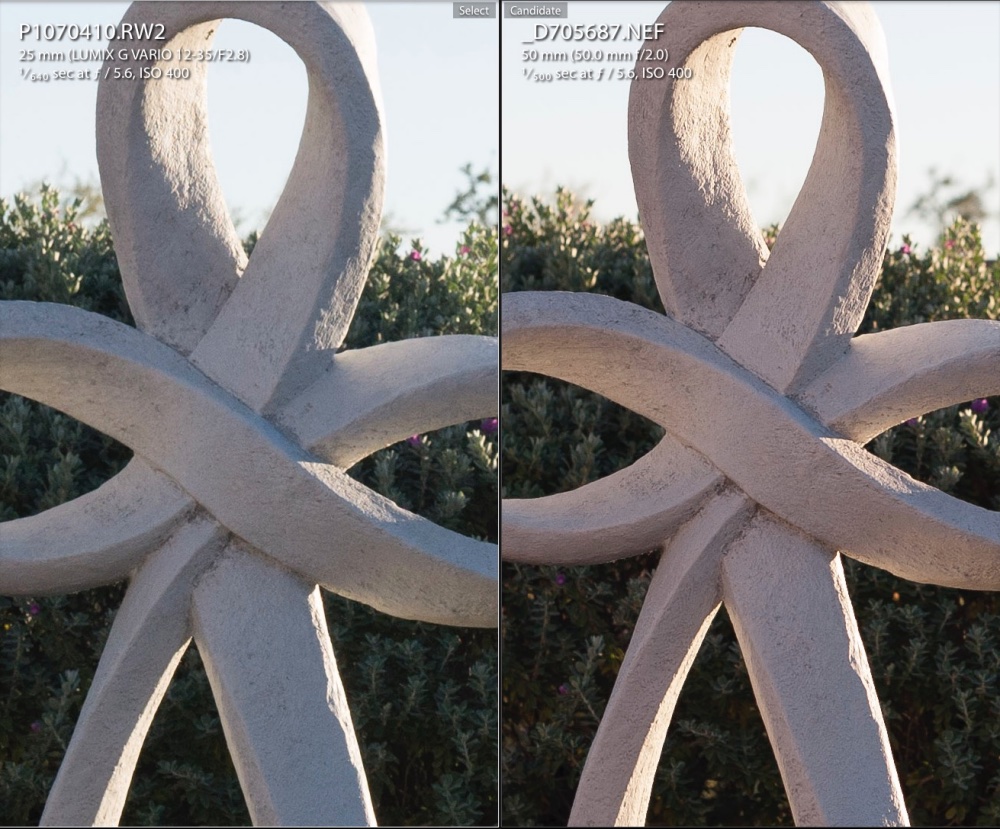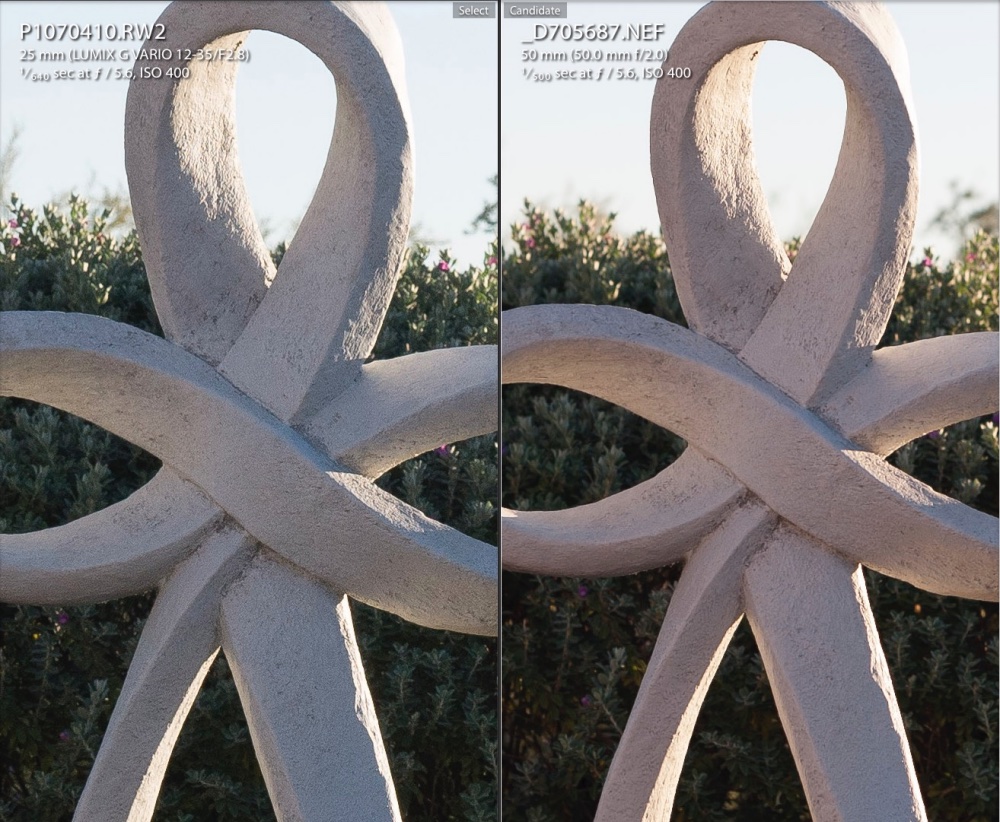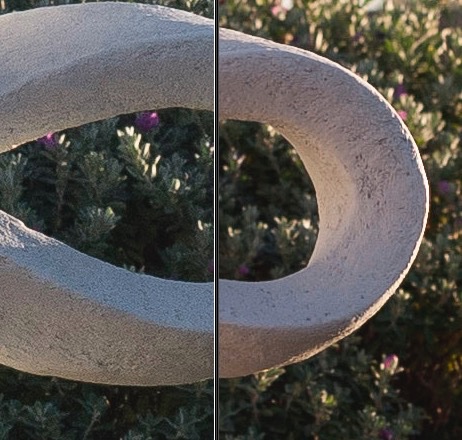The lunacy of the pixel race.
These images are of the same subject with the two best lenses I own – the ‘pro’ Lumix 12-35mm at 25mm (50mm FFE) on the Panasonic GX7 and the Nikon D700 with the 50mm f/2 HC MF Nikkor. The GX7’s sensor is 16mp on 3/4 sq. in., the D700 has 12mp on its 1.5 sq. in. sensor. Both at 400 ISO and f/5.6.

The image below enlarges the center 40x, so a 40†x 60†print. Note the greater warmth of the Nikkor optic. To properly display focal length in the EXIF data I have installed a CPU in the Nikkor lens, which has nothing to do with its optical quality. No extra sharpening – just the default of 25 in Lightroom, no other processing:

These images display maybe 1 mp of the sensors’ pixel counts.
In the next image I have increased the GX7 sharpening from LR’s default of 25 to 70. The Nikon image is unchanged, using default sharpening:

The results are indistinguishable as regards definition.
Here you can compare the shadow details – GX7 at left. The D700 has one of the best sensors for rendering shadows in the business:

The results are again indistinguishable.
The madness of the sensor pixel race, with FF sensors now approaching 50mp, dictates that users upgrade their lenses as all the ‘faults’ of older optics are now on display when pixel peeping. The reality is that no one makes 40″ x 60″ prints and that users would be better off sticking with modest sized sensors and old lenses. The 50mm f/2 HC Nikkor used in the above dates from 1973 and can be found in mint condition for $50. A mint Nikon D700 with low shutter actuations can be had for $450 or less. And you will not have to wait all day for the images to render in Lightroom owing to the modest file sizes.
4mp is all you need.